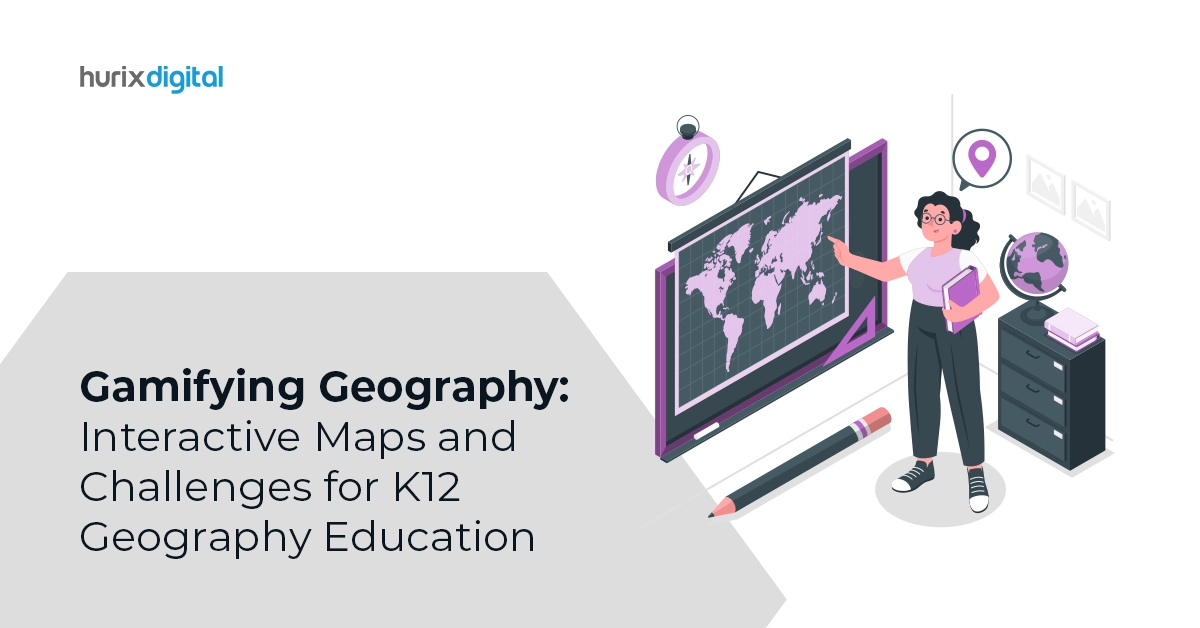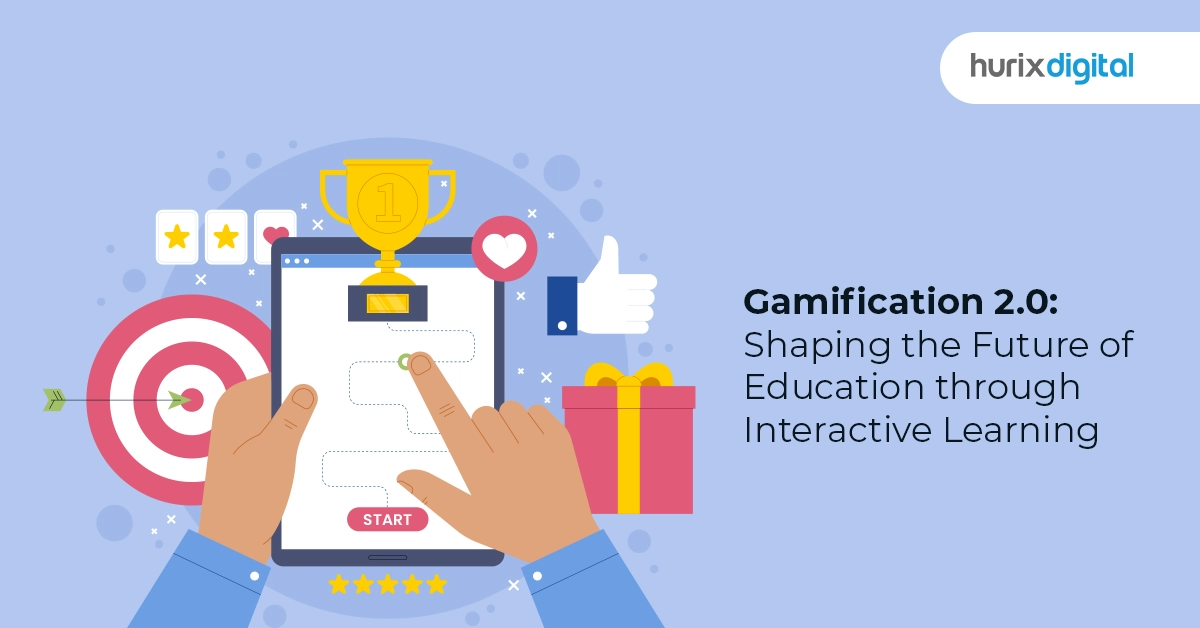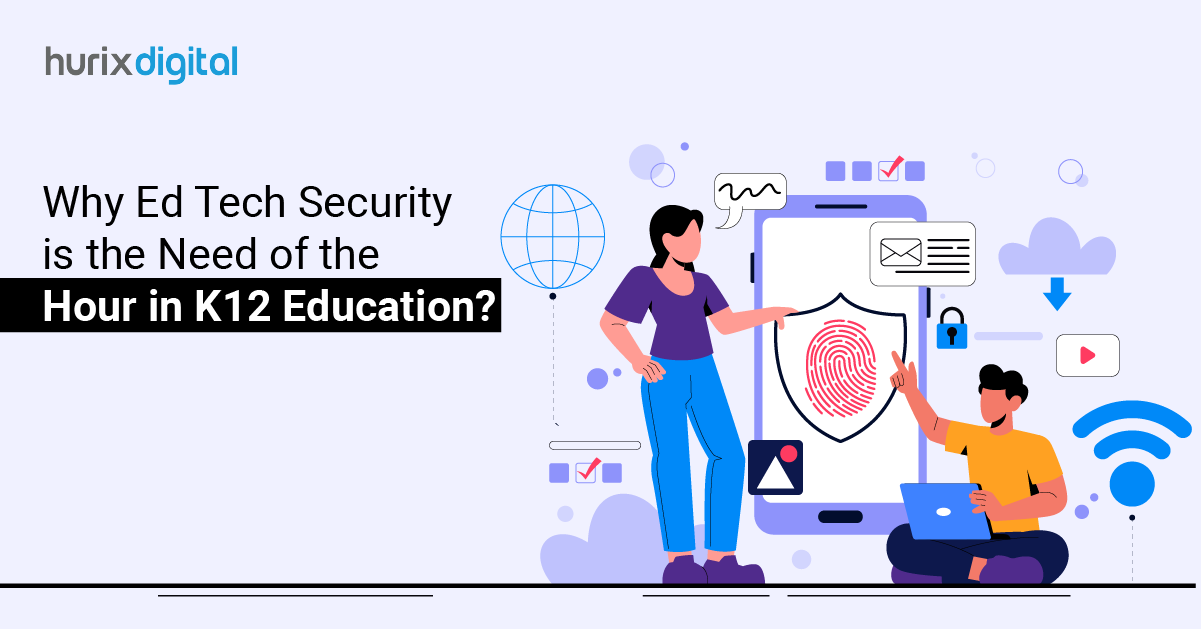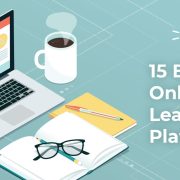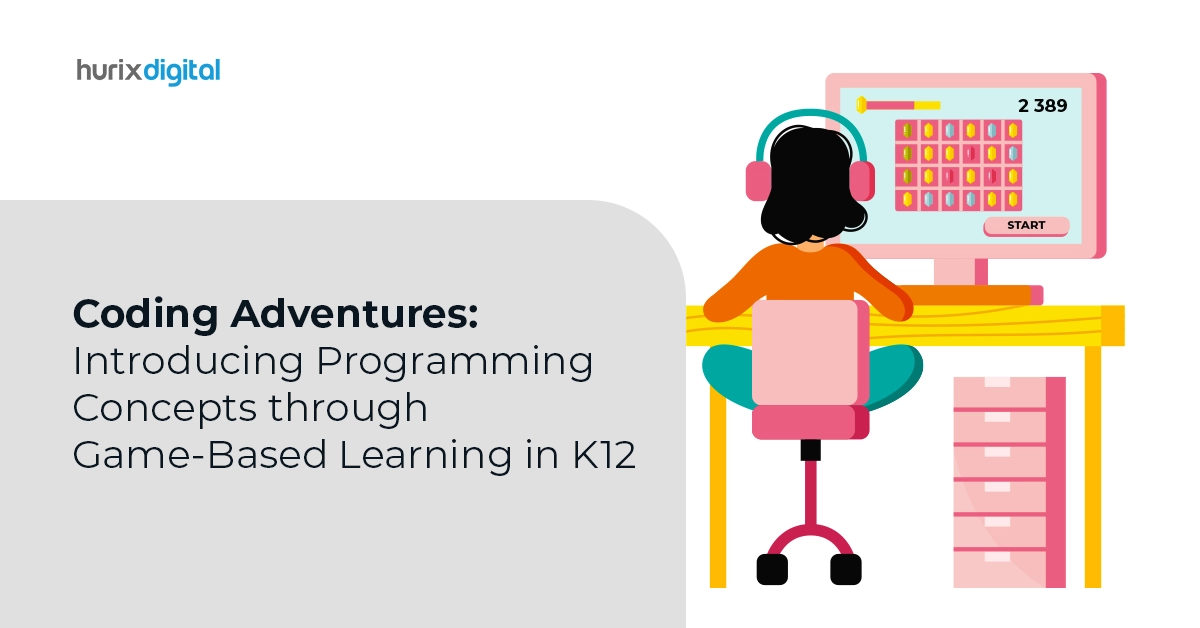
Coding Adventures: Introducing Programming Concepts through Game-Based Learning in K12
Summary
Discover how game-based learning can make programming concepts more engaging. This blog showcases methods for teaching coding through interactive games.
The world constantly evolves, and the education system must adapt accordingly. In today’s tech-driven world, equipping students with coding skills is no longer a luxury but a necessity.
However, traditional teaching methods often make learning to code seem dry and complex, leading to discouragement and low engagement. This is where game-based learning, a powerful approach to K12 education, comes in. It harnesses the inherent love for play present in millions.
Table of Contents:
- The Power of Play: Why Games Make Learning Fun
- Why Gamification in Education is Perfect for Learning Programming Concepts
- Benefits of Game-Based Learning in K12 Coding Education
- Examples of Game-Based Learning Platforms for K12 Coding Education
- Strategies for Bringing Game-Based Learning into K12 Coding Education
- Beyond the Game: Reinforcing Learning
- Conclusion
The Power of Play: Why Games Make Learning Fun
Around 227 million people play games every week in the United States alone. This number balloons to a staggering three billion players worldwide.
Games are a fundamental part of childhood, fostering creativity, problem-solving skills, and critical thinking. They tap into our natural desire to explore, experiment, and overcome challenges.
Gamification in education leverages this power of play by integrating game elements like points, badges, leaderboards, and engaging narratives into the learning process specifically for K12 education.
Also Read: Gamification 2.0: Shaping the Future of Education through Interactive Learning
Why Gamification in Education is Perfect for Learning Programming Concepts
Coding, at its core, is about solving problems and creating solutions through logical steps. Games are built on the same principle, requiring players to strategize, break down complex tasks into smaller steps, and persevere through challenges.
This inherent connection makes gamification in education a perfect fit for introducing programming concepts naturally and engagingly for students.
Benefits of Game-Based Learning in K12 Coding Education
Studies have shown that game-based learning offers numerous benefits when it comes to teaching programming concepts in K12 education:
1. Increased Motivation and Engagement
Gamification in education elements like points, badges, and leaderboards creates a sense of accomplishment and healthy competition, motivating students to learn and progress further in their coding journey.
2. Improved Retention and Understanding
Games provide an immersive and interactive learning environment, allowing students to learn by doing.
This hands-on experience helps them retain information better and develop a deeper understanding of programming concepts.
3. Enhanced Problem-Solving Skills
Games often present challenges that require critical thinking and problem-solving skills.
As students progress through the game, the challenges become more complex, honing their ability to break down problems, analyze situations, and develop creative solutions in K12 coding education.
4. Boosted Confidence and Self-Efficacy
Successfully overcoming challenges in a game environment builds students’ confidence in their abilities to grasp programming concepts.
This sense of self-efficacy motivates them to continue learning and explore new coding challenges.
Examples of Game-Based Learning Platforms for K12 Coding Education
The world of gamification in education for coding offers diverse options for students of all ages and interests, specifically within K12 education.
Here are some specific game examples that showcase the versatility of game-based learning for K12 coding education:
1. Light Bot
Concept: This puzzle game challenges students to program a robot character to navigate through a maze, collecting light bulbs and avoiding obstacles.
Skills: Teaches basic programming concepts like loops, conditional statements, and problem-solving skills.
2. CodeMonkey Coding Adventures
Concept: A series of interactive adventures where students use code to help monkeys navigate different environments, collect bananas, and solve puzzles.
Skills: Introduces fundamental coding concepts like sequencing, loops, and functions playfully and engagingly.
3. Minecraft Education Edition
Concept: This popular game offers an immersive world where students use code to build structures, create redstone circuits, and automate tasks.
Skills: Introduces students to more complex programming concepts like variables, data structures, and event-driven programming in a familiar and engaging environment.
4. Code.org Flappy Bird
Concept: A reimagining of the classic Flappy Bird game, where students code their bird character to avoid obstacles and achieve the highest score.
Skills: Teaches basic programming concepts like conditionals, event handling, and user input, providing a fun twist on a familiar game.
5. Hopscotch
Concept: This simple coding game allows young students to program a character to hop across a grid, collecting stars and avoiding puddles.
Skills: Introduces basic programming concepts like sequencing and directional control in a visually engaging way.
Strategies for Bringing Game-Based Learning into K12 Coding Education
Having explored the numerous benefits of gamification in education for introducing programming concepts in K12 education, we now delve into practical strategies for implementing this engaging approach in your classroom.
Here are some steps to help you integrate gamification in education into your K12 coding curriculum:
1. Choosing the Right Game
The first step is to select a game that aligns with your curriculum objectives and the age and interests of your students.
- Explore game-based learning designed specifically for K12 coding education, like Scratch, CodeCombat, or Tynker.
- Consider factors like game genre, difficulty level, and the specific programming concepts it teaches.
2. Setting Clear Learning Objectives
Before playing the game, communicate the learning goals you want students to achieve.
This will help them focus on specific aspects of the game related to the programming concepts being taught.
3. Guiding Gameplay
Don’t simply let students loose in the game. Provide initial guidance and tutorials to ensure they understand the game mechanics and how they connect to the programming concepts.
Additionally, offer support and answer questions as they progress through the game.
4. Incorporating Discussions and Activities
After playing the game, facilitate discussions to solidify understanding. Encourage students to reflect on the challenges they faced, the strategies they used, and the programming concepts they applied.
You can also incorporate activities like quizzes or coding exercises to reinforce learning.
5. Encouraging Collaboration and Healthy Competition
Leverage the social aspects of game-based learning by encouraging collaboration and friendly competition among students.
This can involve having them work together to solve challenges within the game or setting up friendly competitions to see who can progress the furthest or achieve the highest score.
Beyond the Game: Reinforcing Learning
Remember, game-based learning is a powerful tool to supplement traditional teaching methods, not replace them. Here are some ways to solidify learning:
- After playing the game, facilitate discussions to engage students in reflecting on their experiences. Ask questions about the challenges they faced, the strategies they employed, and the programming concepts they encountered.
- Make sure to design hands-on coding activities or exercises that allow students to apply the programming concepts learned in the game to real-world scenarios.
- Encourage students to collaborate on coding projects, fostering teamwork, problem-solving skills, and creative thinking.
- Continuously assess student understanding through quizzes, projects, or presentations. Provide constructive feedback to help them improve their coding skills and grasp of programming concepts.
Also Read: Leveling Up Learning: Exploring Diverse Gamification Strategies in Higher Education
Conclusion
Embracing gamification in education can transform your classroom into a vibrant and engaging environment. It helps students develop valuable coding skills and a love for learning.
Remember, the fundamentals lie in choosing appropriate games. Integrate them thoughtfully into your curriculum, and create a supportive learning environment that fosters curiosity, exploration, and collaboration.
Want to unlock the power of gamified learning for your students? Hurix Digital, the expert in e-learning and higher education, can help you implement impactful gamification in education strategies to boost engagement and knowledge retention. Contact us today!

Senior Vice President – Business Development
Over 25 years of experience in the edtech and workforce learning industry with strong skills in Business Development, Customer Relationship Management (CRM) and Strategy.

